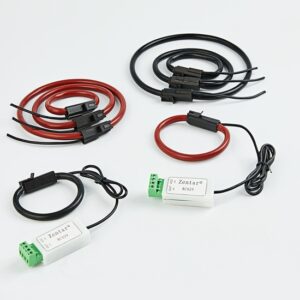1.When the current increases, the magnetic density of the core also increases proportionally. At this time, the magnetic permeability μ and the loss angle ψ also increase, the error of the transformer decreases, the ratio difference decreases, and the phase difference decreases much.
2.The error is inversely proportional to the square of the number of turns of the secondary winding. Therefore, under normal circumstances, increasing the number of turns of the secondary winding can reduce the error of the current transformer. However, with the increase of the number of turns of the secondary winding, the internal resistance of the secondary winding also gradually increases, to a certain extent, limiting the decline of the error. The single-turn or bus-type current transformer has the simplest structure and the most material-saving. But when the primary current is small.
The error increases rapidly and cannot meet the requirements of accuracy level. So single-turn or bus-type current transformers are generally used when the primary current is greater than 300 ~ 600A; if the primary current is below 300A, a multi-turn electrical Current transformers are applied.
3.The error is proportional to the average magnetic path length.
The error is inversely proportional to the cross section of the core. In some cases, an increase in the cross section of the core will not only reduce the error, but also increase the error, which wastes material. The length of the core’s magnetic circuit is mainly determined by the area of the core window, and the size of the core window must ensure that the primary and secondary windings can be installed and the insulation between them. After meeting this requirement, the window area of the core should be reduced as much as possible, and the magnetic path length of the core should be shortened. The smaller the magnetic path length of the core, the more provincial the core material, which is obvious at this time. At the same time, the smaller the core’s magnetic path length, the smaller the error, which in turn can reduce the size of the core and save material.
4.The error is inversely proportional to the cross section of the core.
Generally speaking, increase the core section can reduce errors. However, as the cross section of the core increases, the magnetic permeability of the core decreases.
However, as the cross section of the core increases, the magnetic permeability of the core decreases. As the average magnetic circuit length increases, the internal impedance of the secondary winding increases.
All these greatly limit the reduction of errors small, even in some cases, it also increases the error, which wastes material.
The shape of the core section also affects the error of the transformer. This is because at the same core section, the higher the core, the shorter the average magnetic circuit length. When the core section has the same height and width, the copper wire used for each winding is the shortest. The resistance is also minimal. Therefore, the proportional relationship between the height h and the width b must be correctly selected in the design.
5.The error is inversely proportional to the magnetic permeability of the core.
Therefore to improve the magnetic properties of the core material is the main way to reduce the size of the current transformer for measurement, especially for the current transformer with higher accuracy.
6.The error of the transformer is proportional to the magnitude of the secondary load.
In fact, when the secondary load increases, the magnetic density of the core increases, and the magnetic permeability of the core also increases slightly. Therefore, the error of the transformer increases with the increase of the secondary load, but less than a proportional increase.



